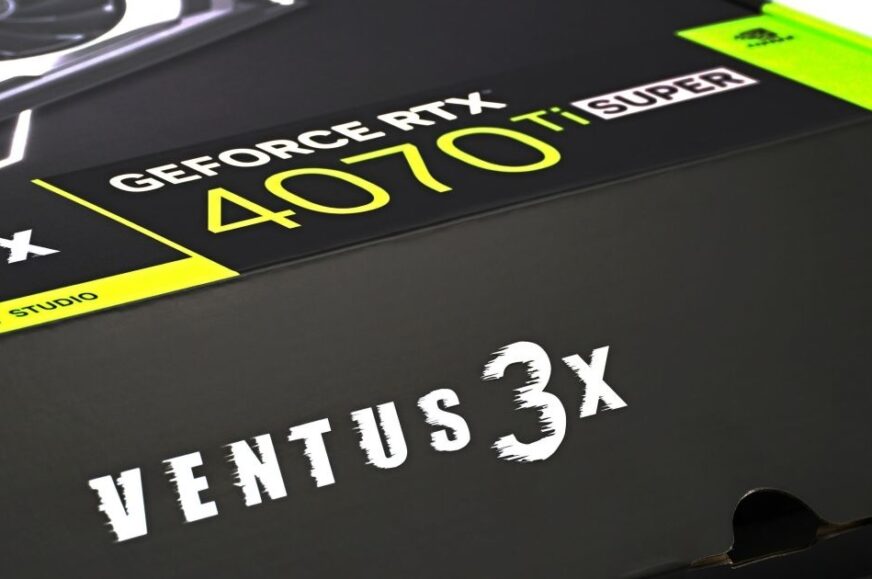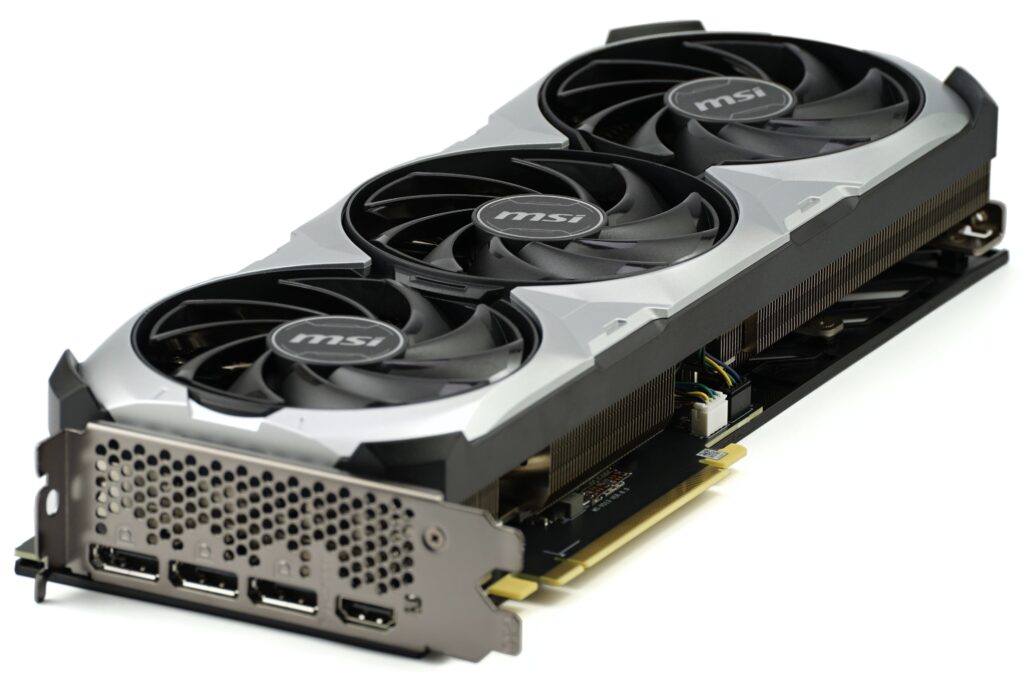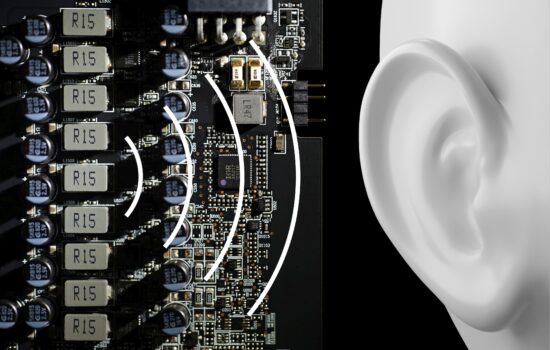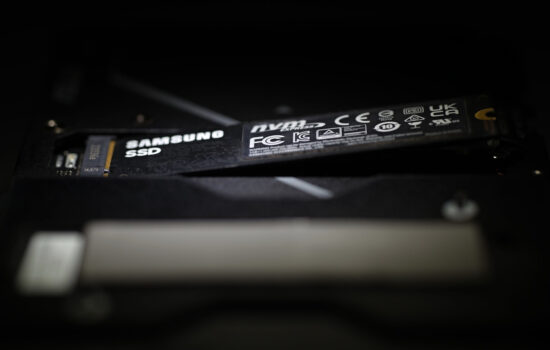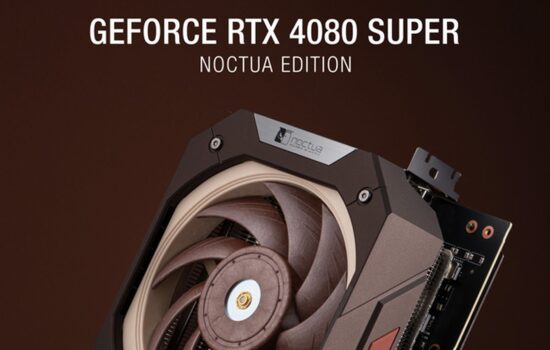Different RTX 4070 Ti Super 16G Ventus 3X, different results
MSI has released a statement saying that the RTX 4070 Ti Ventus 3X graphics cards did indeed come out with an untweaked BIOS that prevents this graphics card from achieving its maximum performance. However, there seems to be a fix already that could solve everything. Still… let’s revisit this topic and try to sort through the possible technical reasons that cause the significant fluctuation in the performance of the cheapest three-fan MSI RTX 4070 Ti Super.
Just when it seemed like the MSI Ventus 3X series of graphics cards was going to be cleared, new imperfections have surfaced in regards to it. The cooler, which used to be a thorn in the side in the past, is now perfect, but again there are complications with the BIOSes. MSI has already released several of them, and counting the original one, the BIOS marked 95.03.45.40.F0 (download link) is the third one in a row.
Rumour has it that with the first BIOS (95.03.45.40.58) performance ends up 5% below expectations and the newer one already achieves those expectations better, although we suspect that there is an attempt to whip the non-OC into performance that can significantly reduce efficiency. But first things first, let’s try to break everything down. In the TechPowerUp! tests, the new BIOS does indeed reduce the performance deficit, but at the same time, it’s important to note that our results diverge significantly from their results when using the original BIOS.
While at high resolution (at the limit of the maximum performance you can get out of a graphics card), at TPU they measured only +5% compared to the RTX 4070 Ti on average across all games. In our tests, it’s +9%, and that’s still comparing the cheap RTX 4070 Ti Super design (Ventus 3X) with the expensive RTX 4070 Ti (Suprim X). If we had the non-Super RTX 4070 Ti in the Ventus 3X variant for comparison, the difference would be even bigger, maybe more than double the one measured by TechPowerUp! with the same BIOS, and that’s quite a lot even if we take into account some inconsistency at the level of different test methodologies, whether it’s the choice of test games (even more so when they have a lot of them too) or the test platform.
However, this is not to cast any doubt on the TPU results, quite the contrary. We trust them and will thus proceed on the assumption that the same card models, i.e. in this case the RTX 4070 Ti Ventus 3X, can behave differently even with the same BIOS.
It’s also notable that while both gaming and compute performance in our tests is as expected (and more or less scales with the ratios of other RTX 4070 Ti Super cards), it’s measured power draw is well below the TGP (and here it should be noted that we don’t use software monitoring to analyze power draw and we don’t base it on system power either, but we measure the real current and voltage on the cables, or on a PCIe power meter). This means that there is some margin.
The thought comes to mind here that when our sample with the original BIOS achieves speeds as expected even with lower power draw than other cards, what happens with the use of a newer “more powerful” BIOS. It’s likely that rather than the graphics card’s speed, it will significantly increase the power draw, thus decreasing efficiency. In other words, increasing speed by 1–2% and thereby increasing power draw by 40–50W may not be what we would evaluate as a “more elegant option”.
But who knows, maybe in our re-tests it will turn out to be something different after all, and most importantly we should probably take into account that the new BIOS can probably change the features of each RTX 4070 Ti Super 16G Ventus 3X in a different way. We suppose that in cases where there is also a negative trend in places (relative to the RTX 4070 Ti) it may be more useful than for our sample, for example.
The newer BIOSes, according to TPU measurements, among other (unknowns) subtly raise the GPU clock speeds (and thus the power limit along with them), but it seems that this may be a weaker card compared to others even at comparable GPU clock speeds. What the technical problem is, unfortunately, we still don’t know, so I can only speculate about things. It’s a strange situation over which there is obviously not a 100% control. The RTX 4070 Ti Super 16G Ventus 3X skeleton is out of the closet.
English translation and edit by Jozef Dudáš
⠀





